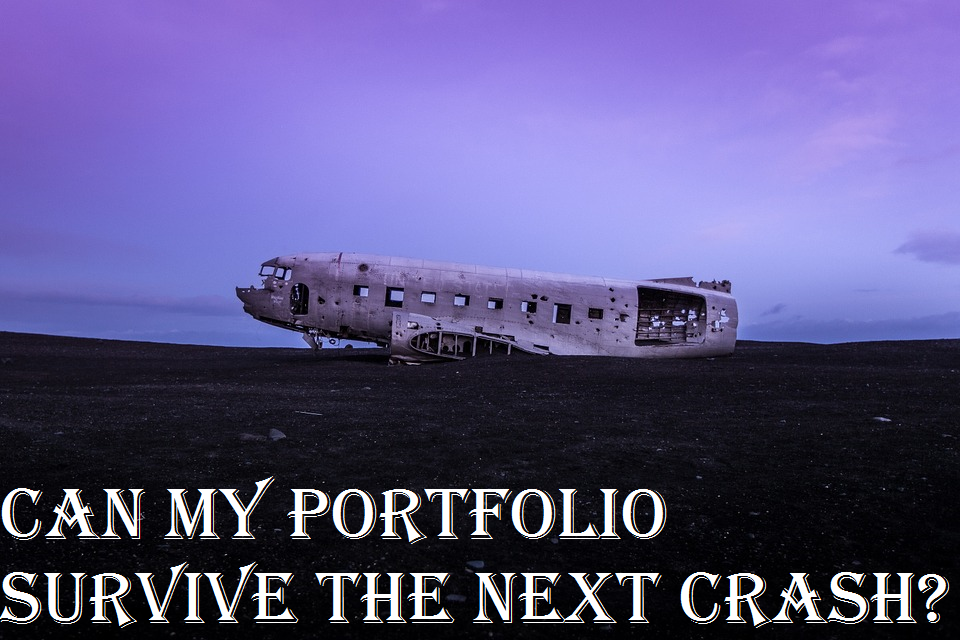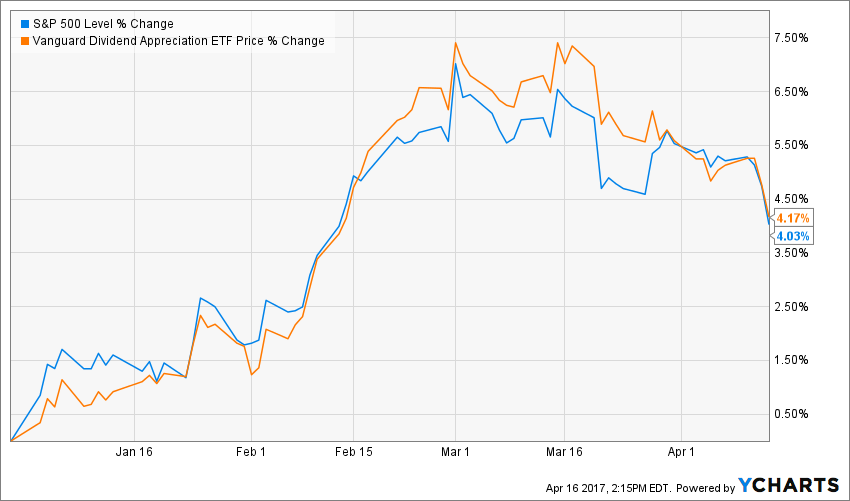Can My Portfolio Survive A Crash?

The idea of losing lots of money in a short period of time is probably one of the biggest fears of any investor. In fact, many of them would rather wait on the sideline than suffer this “inevitable-next-market-crash”. After all, nobody wants to suffer this type of drop:

When a market crashes everybody panics. Should they? Not if they have done their homework first. It is impossible to know when the market will hit a new correction and your portfolio will lose 10% within a few weeks. We all know it is going to happen and we all know the market will recover afterward. Therefore, the only thing you should do is revise your portfolio each year to make sure it can go through a market correction. This is the exercise I will do today with my personal portfolio. I will review each of my holding and make sure they all meet my initial investment thesis.
Agrium (AGU) 2.27% of my portfolio
Agrium evolves in a cyclical and volatile market; commodities. With the upcoming merger of equals with Potash (POT.TO), the company will more than ever evolves along the line of the price of potash. If the global demand goes up, you can bet the stock price will skyrocket. In the event of a market crash, I’m fairly positive AGU would go down and its fundamentals would be hurt. The fact the company is in the middle of a major transaction certainly doesn’t help either. However, the “new” company will be integrated and will show a stronger business model to bounce back.
Amazon (AMZN) 5.57% of my portfolio
While many investors see AMZN as a techno stock, I believe my new acquisition will eventually act like a consumer defensive stock. Don’t laugh, it will not happen overnight and many fluctuations will have happened before that day; but AMZN is currently building a solid business model that will generate a constant flux of cash no matter what happen. When you think about it, if consumers have less money in their pocket, they are most likely to buy online to save on both the good price and transportation. When I purchased AAPL a few years ago, I saw a future Microsoft (MSFT), read a stable business paying an increasing dividend. I think AMZN will become another techno dividend in 10 years from now. I’ll just be enjoying the growth in the meantime.
Apple (AAPL) 16.16% of my portfolio
AAPL is the largest holding of my portfolio mainly because I show a 145%+ profit on the stock price (excluding dividend payouts). On a psychological perspective, I’m very comfortable holding AAPL in my portfolio. The stock could drop 50% tomorrow and I would still show a 30% profit… not bad! Mot importantly, AAPL continues to meet my investment thesis and fundamentals are all in line with my 7 dividend growth investing principles.
Canadian National Railway (CNR.TO) 6.39% of my portfolio
CNR is a classic dividend “buy & hold forever” holding. Who doesn’t like railways? I picked-up CNR during their latest down cycle making it another great dividend payer in my retirement account. I know I could sleep for 10 years and this company would still be in operation and paying a sweat dividend when I wake up.
Coca-Cola (KO) 11.48% of my portfolio
Coca-Cola is part of the first stocks I purchased when I built my dividend paying portfolio 7 years ago. I see more KO as a bond paying an increasing interest than a growth stocks. Over the past 5 years, the stock price was up by 19%, but the dividend payment went from $0.255/share to $0.37. Once again, I can sleep well at night with this holding.
Disney (DIS) 8.85% of my portfolio
I couldn’t stress enough the importance of Disney in my portfolio. I think DIS is the kind of company that could bring both capital appreciation and strong dividend growth at the same time. DIS has built a unique business model by cross-selling its contents from movies to retail stores while going through its theme parks.
Gluskin & Sheff (GLUSF) 3.20% of my portfolio
If there is one company I own shares of that could take a “final hit” during a market correction, this would probably be GS. My investment thesis when I purchase those shares was based on the profitable and growing market of private wealth management in Canada and the option of seeing GS purchased by a stronger competitor. Unfortunately, GS is currently losing high net worth clients money (negative AUM inflows). GS is currently on my “sell watch list” and I could pull the trigger any time soon.
Helmerich & Payne (HP) 3.07% of my portfolio
I know HP is already in a difficult situation due to the low oil price. However, this is a challenging time that will open lots of opportunities in the future. As the drilling market is highly fragmented, there are several smaller players in this industry. The long this situation goes on, the more smaller competitors will die one after the other leaving more market share to HP. As long as the company finds a way to increase its dividend, I will hold on to this stock.
Johnson & Johnson (JNJ) 9.74% of my portfolio
JNJ is probably the one and only stock I would hold if I had to. With 54 years with a consecutive dividend increase, JNJ is my favorite Dividend King. As a bonus, it will also outperform the market during any correction. JNJ is another “buy & hold forever” stock for me.
Lockheed Martin (LMT) 11.63% of my portfolio
Lockheed Martin core business would certainly be affected upon a market correction. If the U.S. economy runs into a recession, budget cuts in their military business will definitely come up as a good solution on the table. However, LMT is a strong player in its industry and its long term history with the U.S. Govt will secure its core business. With a payout ratio of 39.85% and a cash payout ratio of 50.15% (source Ycharts), LMT can easily continue to raise its dividend during a market correction and even create a nice buying opportunity.
Lowe’s (LOW) 8.66% of my portfolio
LOW is part of my core holding that bring additional stability to my portfolio value. Similar to KO, I see LOW more as a bond that will reward me with an increasing interest that will beat the inflation. The home improvement market will continue to provide growth opportunities in the future.
National Bank (NA.TO) 1.88% of my portfolio
National Bank is a small bank and a small portion of my portfolio. I like the bank for its flexibility and ability to grow faster than the larger Canadian banks on specific market like capital markets and wealth management.
Telus (TU)11.10% of my portfolio
Telus is the last, but not the least holding of my retirement portfolio. This is also one of the very first dividend paying stock I purchase back in 2010. I appreciate the heavy Canadian regulation around the telecom industry preventing many competitors to hit Telus and its peers. Who can say no to a 4%+ dividend payer evolving in a stable environment?
My RESP portfolio
A couple of years ago, I made the decision to move the money I save for my children tuition to my broker account. I used to invest in mutual funds as I didn’t want to risk this money as I didn’t see it as “my money” anymore. It turned out that I outperform the mutual funds (which were index funds) the first three years. I then switch it over to a 100% dividend paying portfolio.
3m Co (MMM) 24.78% of my RESP
MMM exploded after I bought it in my RESP portfolio. It now represents a quarter of my portfolio value. The good news is that MMM is a very solid and diversified business. MMM boat will continue to ride any waves sent into its direction without much difficulties.
Apple (AAPL) 15.76% of my RESP
I also purchase AAPL in my RESP as I really believe in their potential over the long run. So far, I haven’t been wrong with this one!
Emera (EMA.TO) 16.50% of my RESP
I wanted something a little more stable for my children plan. EMA is a very stable utility with a 4%+ dividend yield. This was a perfect pick for an investment horizon of about 10 years.
Royal Bank (RY.TO) 18.60 of my RESP
Royal bank is the largest (or 2nd largest depending on the day) Canadian bank. With a solid portfolio of business, this is the kind of company that will reward shareholders with steady dividend payments and capital appreciation over the long haul. Once again, if there is one industry ready to face the bear, it’s the Canadian bank!
Union Pacific (UNP) 18.92% of my RESP
After doing an extended review of the railroad industries a couple of years ago, I decided to purchase shares of both CNR and UNP. I’m holding UNP for the same reasons I’m holding CNR.
Conclusion
In review of my portfolio, I realise there is only Gluskin & Sheff that might be a possible sell. All the others holdings meet my 7 dividend growth investing principles and show solid investment theses. As you can see, I rarely indicated that any of my holdings would go through a market crash without getting hurt. This is because most companies' stocks are going down with the market during challenging periods. Don’t dream; your portfolio will go down too. The important point is to make sure you hold the right companies, those that will go back up with stronger fundamentals once the storm is over.
Disclosure:
Each month, we do a review of a specific industry at our membership website; Dividend Stocks Rock. In addition to have full access to 12 real-life portfolio models, readers can also ...
more


